Ina May's Guide to Childbirth
Autor Ina May Gaskinen Limba Engleză Paperback – 7 aug 2008
"Ina May's Guide to Childbirth" is an inspiring read and gives women the opportunity to take back the fear of childbirth by regaining confidence in their bodies. It tells you everything you need to know to have the best birth experience for you - whether in a hospital, birthing centre or the comfort of home.
| Toate formatele și edițiile | Preț | Express |
|---|---|---|
| Paperback (2) | 85.80 lei 24-30 zile | +37.81 lei 4-10 zile |
| Ebury Publishing – 7 aug 2008 | 85.80 lei 24-30 zile | +37.81 lei 4-10 zile |
| Bantam – 28 feb 2003 | 116.57 lei 3-5 săpt. | +20.18 lei 4-10 zile |
Preț: 85.80 lei
Preț vechi: 108.02 lei
-21% Nou
16.42€ • 17.85$ • 13.80£
Carte disponibilă
Livrare economică 03-09 aprilie
Livrare express 14-20 martie pentru 47.80 lei
Specificații
ISBN-10: 0091924154
Pagini: 352
Ilustrații: Illustrations
Dimensiuni: 136 x 213 x 30 mm
Greutate: 0.38 kg
Editura: Ebury Publishing
Descriere
Ina May Gaskin, America's leading midwife, shares her exceptional birthing wisdom in this intuitive guide to childbirth. By sharing a wealth of knowledge generated by three decades of experience she explains why the natural birthing process, when left to its own devices, can proceed so beautifully on its own. In this invaluable book Ina May teaches you: what really happens during labour; how to create a safe, comfortable environment for birth in any setting; tips for maximising your chances of an unmedicated labour and birth; the risks of anaesthesia and caesareans; and, what your doctor doesn't necessarily tell you.
"Ina May's Guide to Childbirth" is an inspiring read and gives women the opportunity to take back the fear of childbirth by regaining confidence in their bodies. It tells you everything you need to know to have the best birth experience for you - whether in a hospital, birthing centre or the comfort of home.
Extras
Introduction to the Birth Stories
There is extraordinary psychological benefit in belonging to a group of women who have positive stories to tell about their birth experiences. This phenomenon is exactly what developed within our village. So many horror stories circulate about birth--especially in the United States--that it can be difficult for women to believe that labor and birth can be a beneficial experience. If you have been pregnant for a while, it's probable that you've already heard some scary birth stories from friends or relatives. This is especially true if you live in the United States, where telling pregnant women gory stories has been a national pastime for at least a century. Now that birth has become a favorite subject of television dramas and situation comedies, this trend has been even more pronounced. No one has explained the situation more succinctly than Stephen King in his novella "The Breathing Method."* Commenting on the fear many women have of birth, his fictional character observes, "Believe me: if you are told that some experience is going to hurt, it will hurt. Most pain is in the mind, and when a woman absorbs the idea that the act of giving birth is excruciatingly painful--when she gets this information from her mother, her sisters, her married friends, and her physician--that woman has been mentally prepared to feel great agony." King, you may not know, is the father of several children born at home.
The best way I know to counter the effects of frightening stories is to hear or read empowering ones. I mean stories that change you because you read or heard them, because the teller of the story taught you something you didn't know before or helped you look at things from a different angle than you ever had before. For this reason, Part I of this book is largely devoted to stories told by women who planned to have home or birth-center births with me and my midwife partners. You may find this part of the book to be the one you want to read the most during pregnancy. At The Farm, the only horror stories we shared were those of previous births in which the care had been radically different from that given by Farm midwives. As women began to have positive experiences giving birth, their stories helped to calm the fears and worries of those who had not yet had babies. The confidence that these women gained from one another was a significant factor in why the midwifery care at The Farm has produced such good results.
Stories teach us in ways we can remember. They teach us that each woman responds to birth in her unique way and how very wide-ranging that way can be. Sometimes they teach us about silly practices once widely held that were finally discarded. They teach us the occasional difference between accepted medical knowledge and the real bodily experiences that women have--including those that are never reported in medical textbooks nor admitted as possibilities in the medical world. They also demonstrate the mind/body connection in a way that medical studies cannot. Birth stories told by women who were active participants in giving birth often express a good deal of practical wisdom, inspiration, and information for other women. Positive stories shared by women who have had wonderful childbirth experiences are an irreplaceable way to transmit knowledge of a woman's true capacities in pregnancy and birth.
James's Birth
By Karen Lovell
Huntsville, Alabama--Rocket City, U.S.A., where "the sky is not the limit." My husband, Ron, had gone to work for the maker of the world's fastest supercomputers and was stationed at the NASA Marshall Space Flight Center. For all intents and purposes, it appeared that we were people geared toward state-of-the art technology, people who would accept the latest and greatest, even when it came to childbirth. So why The Farm?
That answer begins with the birth of my first son, Christopher. I had just completed working for teacher certification. My plan was to get a job teaching that fall, but before that could happen, I realized I was pregnant. Here I was, fresh out of school with a lot of science courses under my belt, and I felt I didn't know anything about childbirth. Yes, I knew the mechanics, how the body responded, what happened, but I was totally ignorant as to how hospitals and medical professionals responded to childbirth. Learning something about what options I had started me on my search for alternatives.
My first visit with a highly recommended obstetrician in town was pretty unpleasant. The first thing I was told was the temperature in the delivery room could not be adjusted, although the lights could. When I asked to not have an episiotomy, he skirted the issue entirely by asking me what kind of episiotomy I meant, never once saying whether he would or would not give me one. This bothered me, but I knew this was about as magnanimous as he was going to get, so I let it slide. For the time being, I was getting good prenatal care. I could change later. However, as time went on, I was less and less sure of this doctor. In fact, I grew to distrust him. All along, there were little hints that he and I were in different head spaces. The biggest came during the sixth month of pregnancy, when I was sent a certified letter that made no sense whatsoever, unless one read it do it my way or else. Finally, in the seventh month, the doctor said there could be no Leboyer birth,* after leading me to believe all these months there would be. It was at that point that I knew I didn't want this man touching me--and internal exams were to begin in two weeks. I knew I had to find someone else.
A nurse who practiced as an underground midwife suggested a doctor from a nearby town who would provide more considerate care. Under his care I was able to have a Leboyer birth experience, but the hospital gowns and masks meant to create a more "sterile" environment were just that--sterile, cold, and intimidating. Also I had to labor on my back because of the monitor and ended up with a big episiotomy and forceps delivery.
One of the pregnant women, who became my friend after the birth of my son, used an original copy of Spiritual Midwifery as her bible, and even tore out pictures and pages and pasted them on her wall. Her daughter's birth, which took place at home, had a profound effect on me. In the back of my mind I thought that, perhaps someday, I would have a child whose passage into this world would be really loving and spiritual.
My second pregnancy was hardly noticeable. It seemed that the baby sort of slipped in and was no problem. The only indications of my pregnancy were that I missed my March and April periods and my clothes were a little tight around my waist. I wasted no time in finding the most "lenient" obstetrician in town. I had no problems with him and found he was very honest with me. He flatly told me he insisted on an I.V. and that the hospital required an internal fetal monitor, although I could sign a legal waiver and not have the monitor. I had resigned myself to this type of birth if necessary but decided to investigate further. I finally obtained a copy of Spiritual Midwifery from a health-food store in Nashville, where I grew up. Several weeks later I wrote to The Farm, and Deborah Flowers responded.
I immediately felt as if a deep-seated prayer had been answered and prayed that if The Farm was right for me I'd end up there. When I told Ron about hearing from The Farm, I think he was worried. After all, I had seemed so content this time and the hospital was only ten minutes away. Why did I want to go up to The Farm, which was about seventy miles away?
Ron and I had a continuing dialogue about childbirth at The Farm. Finally, we both decided to go visit with an open mind (although I must admit I wasn't quite as open-minded as Ron; I simply knew I wanted to be at The Farm). When we arrived, we met Deborah Flowers and Pamela Hunt, who showed us the facilities and checked me. Deborah said I was one centimeter dilated and loose, which I attribute to her absolute gentleness and the strong rapport I felt with her.
Ron was impressed that the birth cottage had hospital equipment to stabilize an infant in an emergency. He was also impressed with the fact that the midwives were emergency medical technicians and very qualified in their work. He decided to go along with a birthing at The Farm if our insurance would cover it. We found out in a few days that it would.
Because Deborah was my main midwife, I would bare my soul to her. I just knew things would go well. The Farm had it all: "in tune" midwives, a birthing house, a clinic with a holistic outlook, and doctor/hospital backup if necessary. I also liked subtle nuances such as helping the baby's head stretch the mother out without tearing, not relying on cold machines such as ultrasound and internal fetal monitors, knowing how to deliver breech babies, and having faith in the universe.
When I went into labor back in Huntsville, I didn't believe it at first and continued my project of cleaning all the carpets in the house. Intermittently, I rested on the bed to reduce the contractions until 4:00 p.m., when I realized I could no longer clean rugs. I waited a while to make sure of what I was feeling, then at 5:00 I called Ron to come home. He showed up, took things to the car, and we took off down the road after calling the midwives.
Contractions were steady and strong. Ron clocked them at seven minutes apart. Because I sat as still as possible, they remained unchanged. My back hurt with each contraction, which surprised me. Our drive was a little over two hours, and I was grateful for almost no traffic. Once at The Farm, Ron called Deborah, who came to let us in. I crawled onto the bed, where Deborah checked me. Ron brought things in while Deborah helped me through my labor. Chris had fallen asleep on a nearby fold-down chair. Ron sat down on the bed to help me with my back, which really hurt. Deborah grabbed my thigh while Ron pushed my back. It helped, and I told them so.
I could feel the baby moving down. I remembered Kim, this young woman giving birth on a video that Deborah had shown me. She had been really calm and didn't have a husband to rely on. What a chicken I was, groaning, "Oh, my back!"
Just at transition,* I wailed, "My back is killing me." Then, and it was truly a prayer, "Oh, God, help me." Just then I felt my whole bottom bulge. The midwives commented on how stretchy I was. I pushed, and they could see the head. I pushed again and out came the head. Such a relief. The rest of the body seemed like nothing. Ron got to cut the umbilical cord after it was clamped, and Chris awoke in time to see the cut. A few minutes later I was easily able to push the squishy blob (the placenta) out of me.
I had a beautiful baby boy, born around 11:50 p.m. with hardly any head molding. He wanted to relax before nursing. We looked him over, then gave him to Joanne to weigh and dress while Deborah and Pamela gave me two stitches for a small tear.
I was grateful to have had such an easy pregnancy and that the birth itself was not just a psychosocial event but spiritual as well. I was thankful to have such loving, caring midwives and such a loving, thoughtful husband. I knew that this was the right way to have a baby. I enjoyed how the midwives paid attention to every detail and looked at things intuitively as well as on the surface.
The next day I felt so good. I looked at the clear blue November sky and the brown oak leaves left on the trees and basked in the warmth of the sun. I realized that I was truly blessed, that there really were some things on which technology could not improve--one of those was the billion-year-old evolutionary process of human childbirth. To some it may have seemed primitive; to me it was perfect.
Harley's Birth
By Celeste Kuklinski
Around five o'clock I started feeling unusual cramps. Not wanting to give a false alarm, I didn't say anything. I had my General Education Development (GED) class that night, and I didn't really feel like going. Playing "truant officer," Donna, my mentor and friend, drove me to class. Mary, the teacher, said I was probably just having those fake, practice cramps (Braxton-Hicks). I went home early, unable to concentrate.
The cramps were getting stronger, and I was feeling warm and excited. I still didn't want to call these cramps "contractions" in case it wasn't really happening. I timed them and they were about four minutes apart. Donna asked if I wanted to go see a midwife, but I decided to hold off until I was sure I wasn't getting excited over nothing.
Finally, in the middle of a Star Trek rerun, while my body was positioning itself in contorted ways all over the chair I was trying to sit in, I concluded that I had better see a midwife. Donna and I drove over to Pamela's. She checked me and informed me that I was three centimeters dilated and that I would probably give birth that same night. Surprised and happy, we went home to prepare.
Finally, the moment had come. Pamela soon arrived, followed by Ina May and Deborah. By this time, my ability to converse had deteriorated. I was just trying to deal with what was happening to my body. Things were happening quickly. I didn't try to hold any of the contractions back. I just let them come as fast as they wanted to, knowing that would help the birth happen without delay. It all felt very natural. I just "went with it." I went with taking a bath too, which was very helpful and relaxing. Ina May and my mother gave me support in the bathtub. Ina May showed me how to breathe deeply and slowly.
I tried it, and just then one of the strongest contractions yet overwhelmed me. I had to stand up. Some bloody, gray stuff dribbled and plopped into the bathwater. About this time, I started saying, "Oh, God!" I came out of the bathroom and did what I had to do, whether it was squat, bend over, walk around, say, "Oh, my God," or dance like a whooping crane. The contractions were getting very intense. I hardly had time between them to rest.
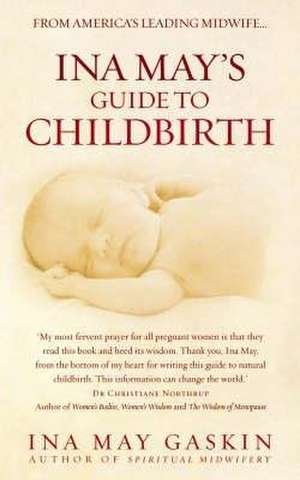









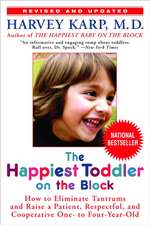


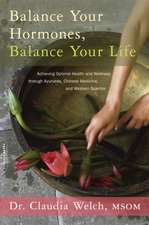



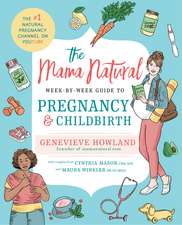
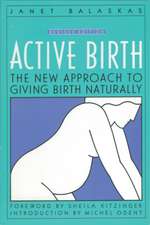



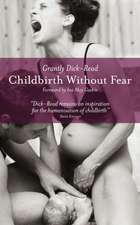
![What To Expect The 1st Year [rev Edition]](https://i0.books-express.ro/bt/9781849831659/what-to-expect-the-1st-year-rev-edition.jpg)
